

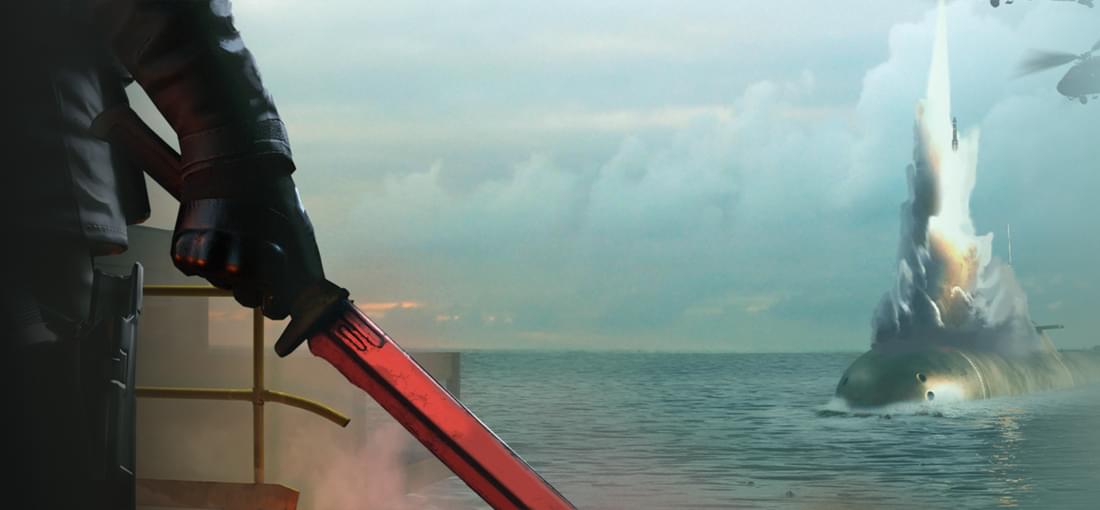
This DLC includes two new levels, three new weapons, and some fluff. One mission involves assisting a friendly team under attack. Things go poorly, and the Director shows her true colors in a foreshadowing of things to come. An average Trepang level - mix of tight and open combat, good worldbuilding. The other mission involves raiding a research base built on ocean platforms. Mostly open air combat, but some midsized rooms with large midroom cover. There's a fun* boss fight at the end that plays unlike anything else in the game. The player feeling accomplished for pulling it off. The sword is interesting - better even than the shotgun at point blank, but worthless otherwise. It doesn't populate on the maps, meaning the player has to commit to it early and lock out one of their two weapon slots to keep it. It bounces off heavy troops, making it situationally worthless, but is a beast elsewhere, mowing down multiple mooks in one swing if they're close enough. It's unbalanced, but in an interesting way. The revolver has low ammo, a long reload, no mods available (despite the model having a rail), and delays its shots a hair to simulate a heavy trigger pull, but decimates enemies and has a 'fan the hammer' option. A scopeless precision weapon, the mid range version of the DMR. The machine gun is 'the rifle' with a slower rate of fire and more ammo in the magazine. The most disappointing new weapon, it pads out the list a bit without adding anything new. My only issue is the boss fight. A fun, engaging challenge on Very Hard. On Expert, I suspect it is unwinnable. The enemy fires a dozen heat seeking, cloak ignoring, target-leading missiles that take all armor and half health with splash damage. There are so many they outlast Stamina, so are undodgable. They whiteout vision if you try to shoot them down. There's deviation that makes them hit around what minor cover is available. Uou have to survive four batteries, minimum, to win the fight.
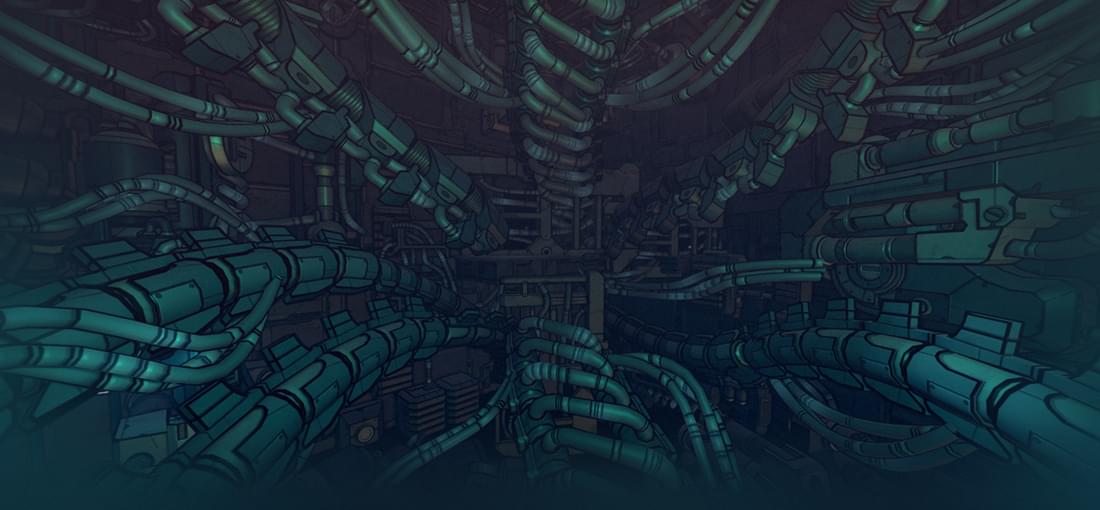
Cryptark is one of my favorite games of the millenium. Gunhead is Cryptark, moved to 3D. I wanted to love it. But the move to 3D came with a massive simplification of the textures. Nothing looks as good as it did. The ships seem less like derelicts, formerly functional vessels, than like arena boxes bolted on to each other. It's all vibrant neon-grit minimalism, instead of Cryptark's just-shy-of-Giger thanomechanical estetic. They didn't use a Descent-like engine, but a standard FPS one. So now the derelicts have gravity, which doesn't sync with the fictional framework or the way interiors are laid out or how the enemies fly around freely or basic science. Interfacing with things suspended in mid-air is extremely awkward - the player freezes in air for unknown reasons if the Interact key is pressed while in the unintuitive sweet spot for fiddling with ship hardware. In both games the player is up against massive odds, which they overcome by solid planning beforehand and rapidly executed aggressive surgical strikes. FOV for Cryptark gives the player 360 awareness to a limited depth : They are The Aggressor, zipping through the ship like a living scalpel, in total control of the thirty feet around them (until they aren't). In Gunhead the FOV is FPS standard, so most of the space around the player is not in view, making the player feel like The Hunted. Ironically, the "you can see out until your view is blocked" nature also makes Gunhead sometimes feel less tense. In Cryptark, the ship layouts frequently gave shortcuts or alternate paths through open 'hallways'. It felt very organic. In Gunhead, it's a bunch of arena boxes welded to each other, to be taken in sequence. There are pacing and balance issues. Game ruining bugs in Gunhead (never in Cryptark). Ironically, the Gunhead looks worse. It was a clear nod to the A-10 Warthog, boldly aggressive. Here it's just a humanoid chasis. Cryptark is a masterpiece. Gunhead feels rushed and incomplete.

There's no game here - no choices to make, no way to lose, no player agency, no puzzles, no player skill required. There are nine 'areas', each roughly two screens wide and two tall, the player wanders through to find sixteen characters. Press the interact key to have them monolouge abstractly for a bit. The only valuable difference between 'playing' and watching a let's play of it is being able to time how quickly the text scrolls. It has a generally positive, if ham fisted, message. Reading the other reviews, it clearly speaks to some people more coherently and influencially than it did to me. The plot is that a drunk who is self medicating after 'something' has a nightmare full of personal demons (who stand around doing nothing). There, you can already extrapolate the whole story from that starting point - there's one of two narratives it'll fall in, and if you're reading these reviews you know it'll end generally positively which narrows it down to one potential narrative. Look, "Midnight Station" is free, has an almost completely novel plot, has a similarish minimalist art style, and features actual gameplay elements and problem solving that revolves around understanding the metaphysics and psychological/emotional connotations of plot elements. Play that instead. If you have a few bucks, "In Sound Mind" here on GoG is a fantastic exploration of people struggling with mental illnesses, try that instead.
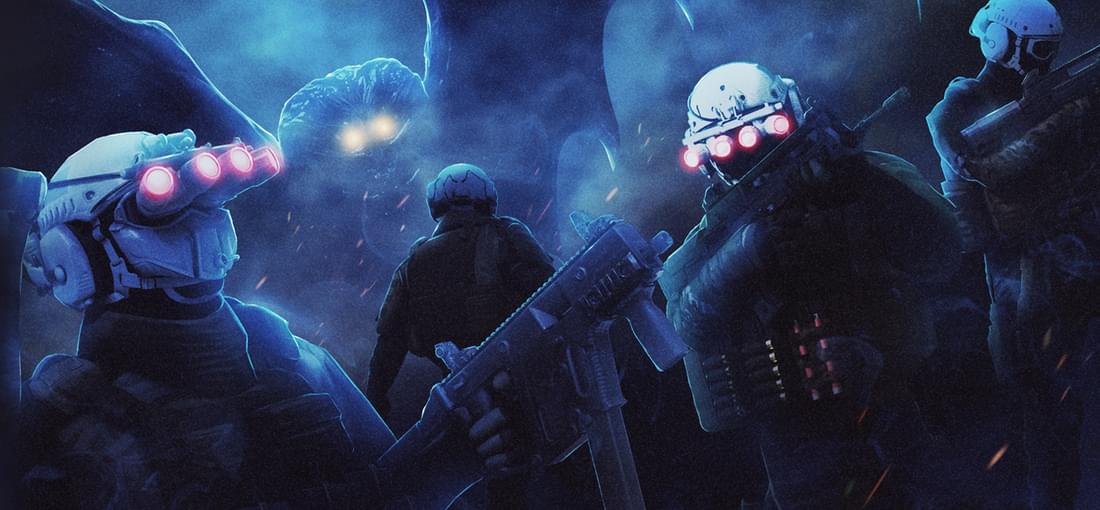
Joking aside (there is no Trepang1), this game is fantastic. The developers clearly understand level design, pacing, how to execute a multitude of emotional and environmental themes properly, staging unlockables, and how to craft a solid gameplay loop. Each level has it's own theming, and no two feel alike. With the exception of a single level set in a wide desert expanse around a crashed airplane, where the whole level is in play at any given moment, the level loading times were always under three seconds for me - a single load, pre-mission, seamless loading afterwards. There are layered toolsets the player has to manage simultaneously - a brief but recharging cloak, ammo, stamina (which refills to double it's max when you kill someone, encouraging kill chains), controllable bullet time (requires multiple kills to recharge), enemy positioning, light levels... you can do alright mastering a few of those, but need to maximize all of them to survive at higher difficulties. Each level can run at any of six difficulties, and re-run later at a different one. So there's no 'skillgate level' - if a particular one is too hard, breeze through it on Easy mode without penalty. They range from 'Point A to B to C' affairs, King Of The Hill zone control, wave survival, and various forms of survival-horror. Some are cramped, some expansive, some lonely, some full of allies. Lots of variety! Weapon modifications can be found in missions, permanently unlocking them. Starting weapons get unlocked as levels are beat - you can them return to earlier levels with them, since you can replay any level at any time. High Value Targets only spawn under certain (advertised) conditions - kill them and they're dead-dead, and you're one closer to total dominance. Clothing options get unlocked by beating particular levels on certain difficulties. Thematically, it's like the ideal hybrid of FEAR and EYE : Divine Cybermancy, with Doom-level aggro and GodHand-esque flow states.
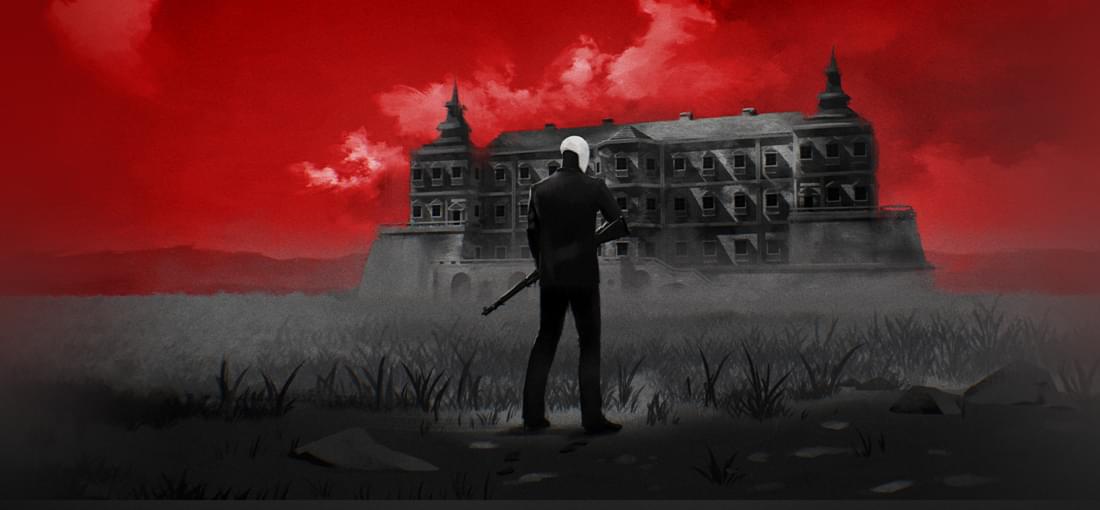
Pros : -Hotline Miami-like gameplay, focusing mostly on gun use. Almost on par with the first game in moment-to-moment play. -An 'unlock for later' vs 'benefit this run' currency system. You're constantly choosing between long term and short term gains. Engaging! -Choices for the special traits are variable, forcing the player to find emergent synergizing opportunities and switch up their play style to take advantage of the options on offer. -Upgrade currency is accelerated if you play aggressively, but it's easy to push into 'reckless' territory and overplay your hand. There's a 'just stealthy enough' sweet spot, and it feels good to ride that once you find it. Solid push-your-luck mechanics, where player skill is a major factor in how fast/far you can go. -You get to choose which weapons show up in any given run of the game, which adds great variability. All shotgun run? All silenced weapons? Just pistols? Legit options, but you're deciding on both your and your enemy's armaments. Unexpected, but wonderful! Cons: Just the one really: Every seven(ish?) levels there's a boss. This ruins the game, IMO. - Boss fights are open arenas. Tactical gameplay disappears - it's all DPS and timed dodge rolling. It's less 'HLM's final fight', more 'playing through Dragon's Lair with one quarter.' - Bosses are REALLY spongy. You generally hold down the fire key and maneuver for ages before taking one down. - Consecutive bosses get even spongier, with faster attack cycling, in smaller arenas, dealing more damage. - When you die because you mistimed two rolls three minutes into a fight an hour into the game, you go back to square one. On most levels, dying is because you had a failure cascade. During boss fights, it's cause you screwed up increasingly-nitpicky timing 3, 4 times. All your weapon choices and upgrade choices end up subsumed to raw DPS. Many interesting upgrades are worthless in boss fights, so they get ignored. It shoots the whole game in the foot.
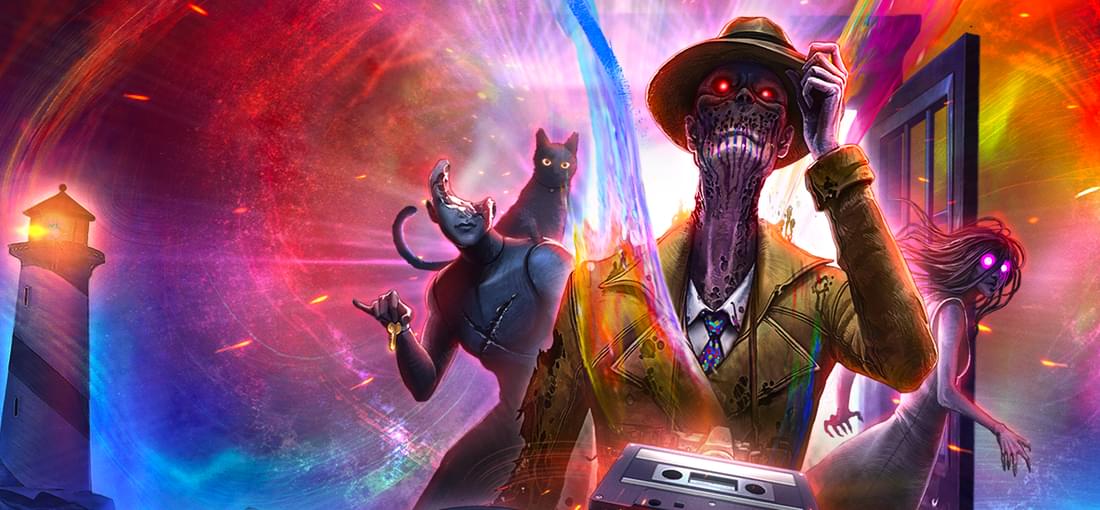
Creepy. Novel elements. An enemy who manages to be both an occasional comic relief and a lurking omnipresent threat. Amazing level design with perfectly signposted-yet-subtle layout and a heavily, almost Metroidvania-esque-ly interwoven main hub with unlockable elements. Gameplay and tonal shifts between 'zones' that keep things from getting stale. I walked into In Sound Mind knowing nothing about it, and I won't ruin that for anyone reading this, but it might very well be the best game I played this year. The plot, pacing, and ideas it explores regarding humanity would have made it worth slogging through if it were a vastly inferior moment-to-moment experience, but coupled to just how well they handled the engine, level layout, sound, balance... it's a masterpiece. Replay value seems low, and while short it doesn't overstay it's welcome, so it's not a huge commitment.
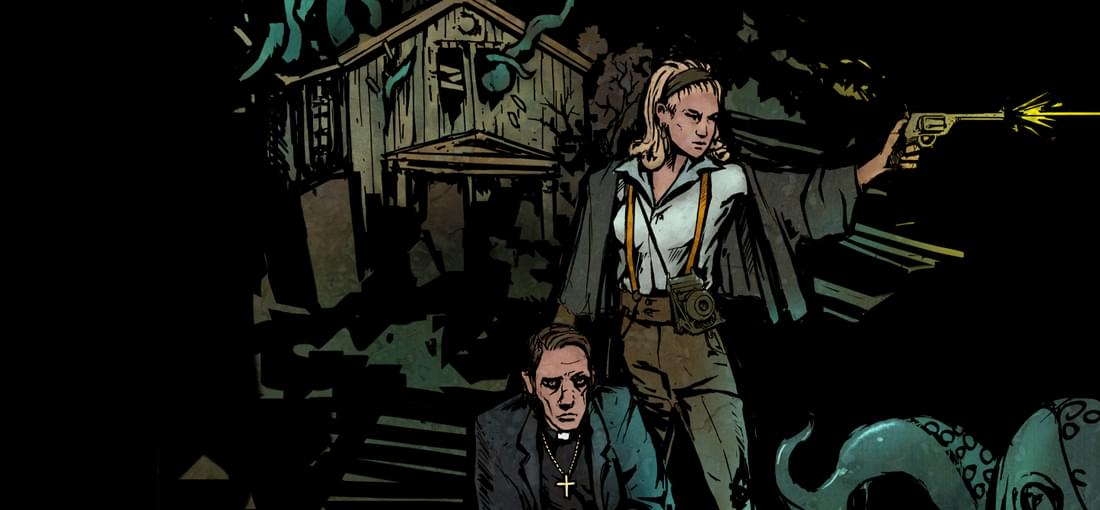
Forgive Me Father has excellent enemy design. There are no hitscan baddies - ranged enemies fire dodgable projectiles. Shot placement matters - headshots do extra damage, and many of the enemies can be nerfed by a well placed shot. Zombies go down with a headshot, as opposed to several body shots, but there is a zombie model that carries a severed head and slams it on the bloody stump to keep fighting when it's 'normal' head is blown off. That's grotesque and hilarious and wonderful. The mysterious troopers wearing rebreathers go feral and turn from ranged cover-seeking tactical soldiers into suicidal melee fighters if you shoot the tank of whatever they're breathing off their back. There are a few more similar examples. The first two levels are excellent, with limited ammo and hordes of enemies making things tense. From there things go downhill quick. You'll very quickly have a small arsenal and several leveled weapons that make mincemeat out of most enemies, and the game's only available response is to just start swarming you with enemies. It rapidly degrades from a tense survival FPS into being a first-person bullet hell. Hallways and fields give way to repeated arenas, most with enough healing items to bring you to full between dodging sessions. Things continue to degrade - at one point late in the game there's Xen-esque jumping sections intermixed with warped in ambushes along narrow, cover-free platforms. Halfway through the game there's a big fun twist, complete with a multi-level descent into the source of the chaos. Finally, after a few fun levels you overcome the source of your struggle, and ... then the game just goes on? Unconnected levels continue for a few hours, until you get to another ending later that completely ignores the twist. Having beat it, I think I would have rather replayed Project Warlock again, which has a similar art style and does most of what this game does right but without any of the glaring flaws or late game slog.
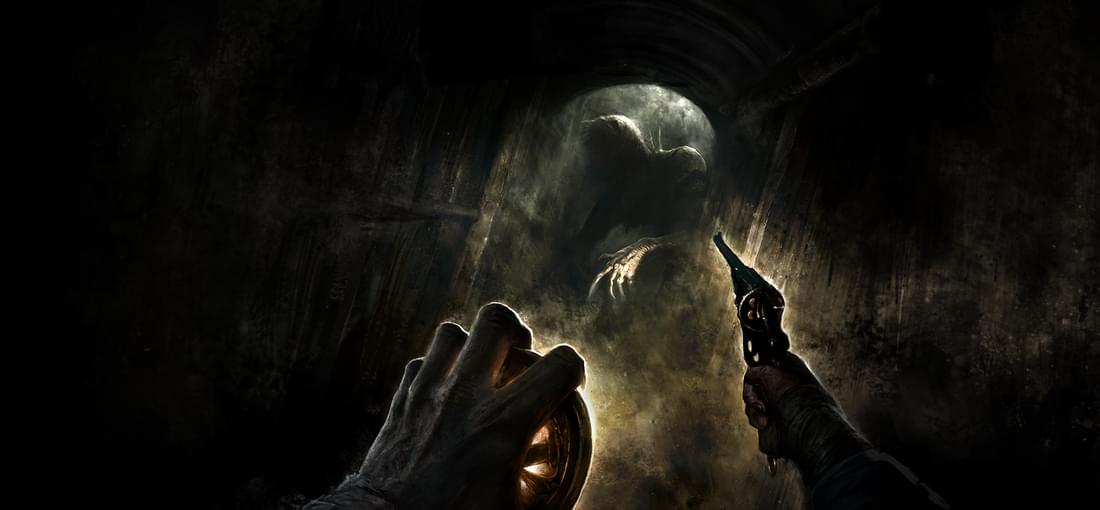
The 'Amnesia' series taught us to expect cycles of rising tension, punctuated by periods of either relief or a monster showing up to wreck our day. 'Dark Descent' and 'Rebirth' avoided just being excellent walking simulators by virtue of some lite strategy surrounding light control. In 'The Bunker', I got murdered, from full health, in a calm moment, when I stood next to a hole The Hunter happened to check. It happened shortly after that again, in a different place, because I wasn't checking my six often enough... again in a moment I thought was safe. In total I died forty-some times in my playthrough, and each one was a combination of my own fault and The Hunter's excellent, not-giving-any-chances predatory skills. If the other games have tension meters that look like capacitor discharge graphs, all escalating buildup and release, 'The Bunker' is a flatline running near the top of the chart. There's one place the player can feel relatively safe, with the tools they need to plan out what to do next and what resources to commit to the next leg of their almost entirely self-directed mission, but the player may spend 5% of their time there. As soon as they unlock the door, before they even step out of the 'safe' room, all bets are off. The bunker itself is heavily Jaquayed with some lite tool-based Metrovania area locks. It's not an A-to-B-to-C affair, there are navigational options. You get to learn your procedurally generated purgatory well enough to sprint it in the dark. And sometimes you will. Heavily recommended. It takes what worked already and tweaks it into a familiar yet new set of scares. Doesn't render The Dark Descent obsolete... but The Dark Descent couldn't replace this one, either.
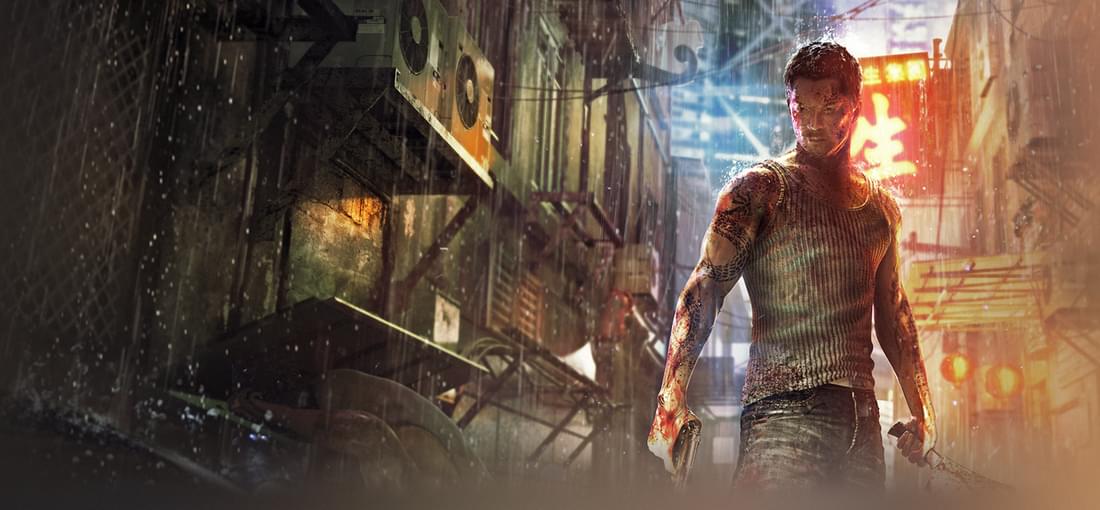
"Sleeping Dogs" avoided the True Crime name because of a licensing dispute, but it was originally created to be the third entry of the series. And it shows - it's an open world map with scattered bonuses that increment your character's capabilities, with sequential plot missions activated by driving to their location that temporarily narrow player agency down to "Complete mini-game A, then B, then [n]..." It's much better than the second True Crime game, but falls short of "Streets of LA"'s greatness. PROS : -Decent visuals -Universally above-par voice acting -Reasonable length -Multiple XP types, with different corresponding perks to unlock -Bonus Cop XP for minimizing collateral damage, Triad XP for maximizing brutality against fair targets. A good set of incentives to encourage skillful play during missions. CONS : -Over an hour of forced tutorials -Far too easy -The upgrades earned, by wandering away from the main plot beats and exploring the map or by earning mission XP, are minor and not necessary with how easy the game is by default. -Pacing issues, lots of "get on with it already" moments. -Lacks LA's branching narratives -Easy to cap Cop XP (all the Cop upgrades unlocked) with lots of game remaining. Leaves the player rushing through the latter bit, playing a bit sloppier. -A few bugs remain - if an automatic rifle is firing when a cutscene kicks in, the audio loop will play forever. In police-evasion missions you can frequently "die" in your car for no observable reason. Etc -While well acted, the MC is a little bland, and frequently makes decisions more in line with someone with a criminal fetish rather than like the undercover cop on a mission of revenge he theoretically is. -Needlessly narrows the tools available to the player during missions, requiring completion by following the game's exact internal reasoning. It could have been on par with LA with some more tweaking. As is, it's fine, somewhere between GTA 3 and Saints Row 3.